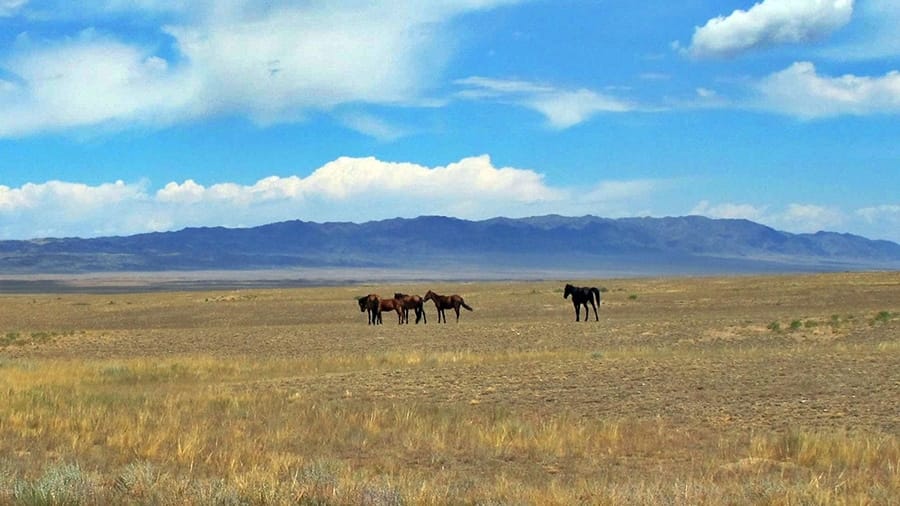Go through the high mountains,
Through fast-flowing river,
Through thick, impenetrable forests,
Through the large lake,
In many countries,
Go through the desert,
Where the bird’s wings are tired,
Find the way to off-road,
Be ahead of the troops in battle.
Let it be your horse is always ready,
I wish you this.-[Kazakh blessing for a child when he first sits on a saddle]

The ubiquitous horse is both a companion and provider for the Kazakhs. The revere it like a god, mythicize it (tulpar, a winged horse), use it for travel and sport, flaunt in popular iconography, and depend on it for sustenance and nourishment. A child is put on a saddle (ceremonially) at the age of three, and blessed (as in the poem above), to become a lifelong friend of the horse.
In a story of many firsts, as in the story of the apples (Part 1), the horse was first domesticated in Kazakhstan. Scientists from the University of Pittsburg have identified the settlement of Botay to be the first place where this remarkable transition occurred; and this event went on to change the political map of the world. There is a town called Atbasar near Botay: Atbasar means ‘to ride on horseback’. Kazakhs have been breeding horses for 5600 years, and researchers have even unearthed the model of the first bridles ever made.
Some of us may recoil at the thought of eating horse-meat but when you are a nomadic race, and have to travel across vast distances, you tend to maximize and stretch all that have. Waste is a luxury you can ill-afford when the cold wind blows through the steppes, and your next destination is both uncertain and unknown. In a semi-arid land with seasonal extremes, cured foods tend to become your dietary staples and animal hides your protection against the elements.
While Americans in general avoid horse-meat, it is quite popular in some countries in Europe, South America and Asia. Incidentally, Kazakhstan is the second highest consumer of horse-meat in the world after China! Besides meat, both horse and camel milk (shubat) are the source of year-round nourishment and health. Fermented horse-milk, called Kumis, a staple of yesteryears’ nomadic life, is now extremely popular and artisanal versions (in plastic bottles) are available on the roadside!
Herodotus, the Greek historian, mentions the Kumis in his writings about Greek and Scythian horse-raiders of the mountain-steppes. The curative powers of the Kumis is the stuff of legend: from leprosy to impotence and almost anything else in between!
In Almaty I had a local host, and I was overjoyed when he invited me to have lunch with his family. At last I would get to try some horse-meat and kumis, but honestly, I was a bit apprehensive. The Kumis was too pungent for my urban palate, but the besbarmak (the most popular and national dish of Kazakhstan) looked appetizing. It is essentially boiled horse-meat (can be substituted) served on a bed of flat, rectangular, noodle sheets, alongside a broth. The texture and fat-quotient was new to my palate, and I have to confess that I struggled: it is an acquired taste, after all. I feasted on the Manti (minced lamb dumplings), Baursak (close to a fried doughnut) and Pilaf (a close cousin of the Biryani).
Post lunch, as I walked outside my host’s house, I could see a few horses grazing in the distance. Then my host pulled up in his Datsun to give me a ride to my hotel. As I stepped in, an inevitable observation crossed my mind: The old Kazakhstan was fast disappearing; a new one teetered on the edge of modernity!



































































